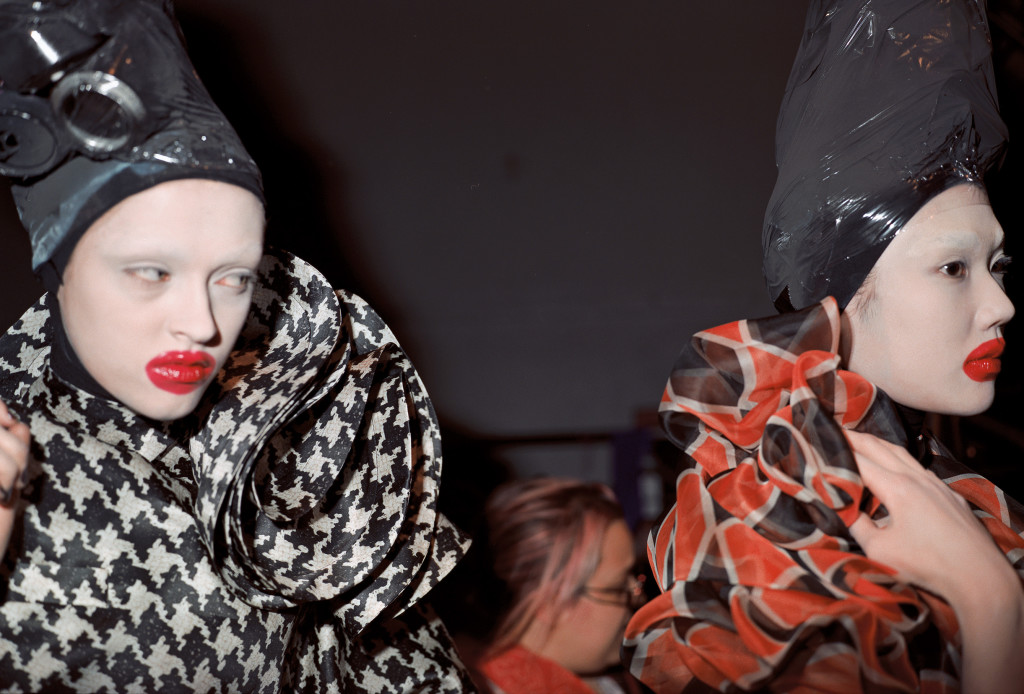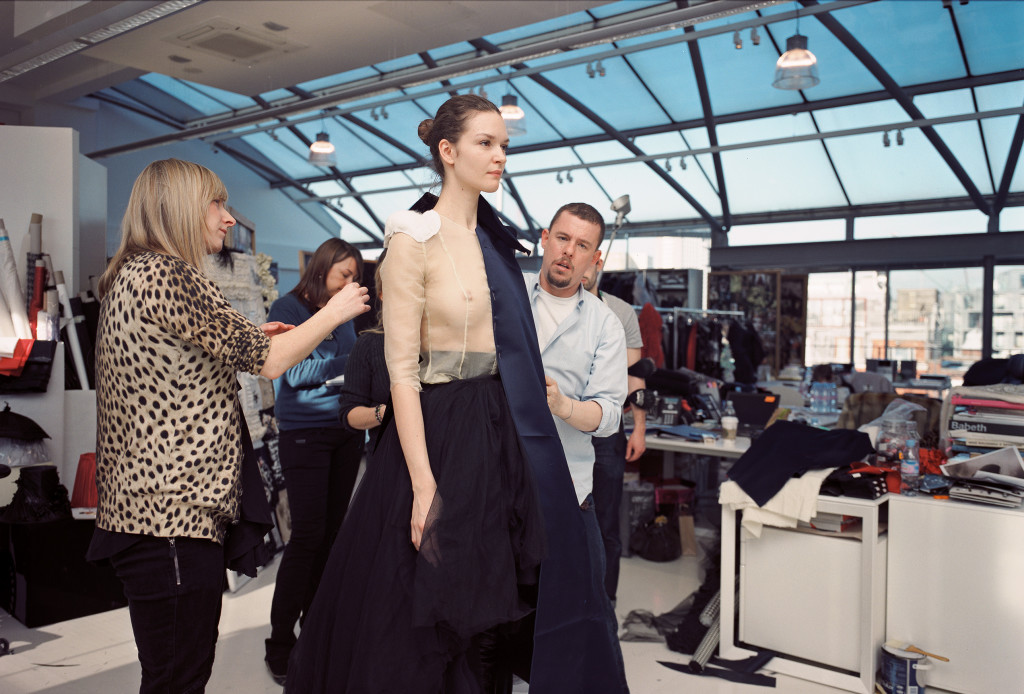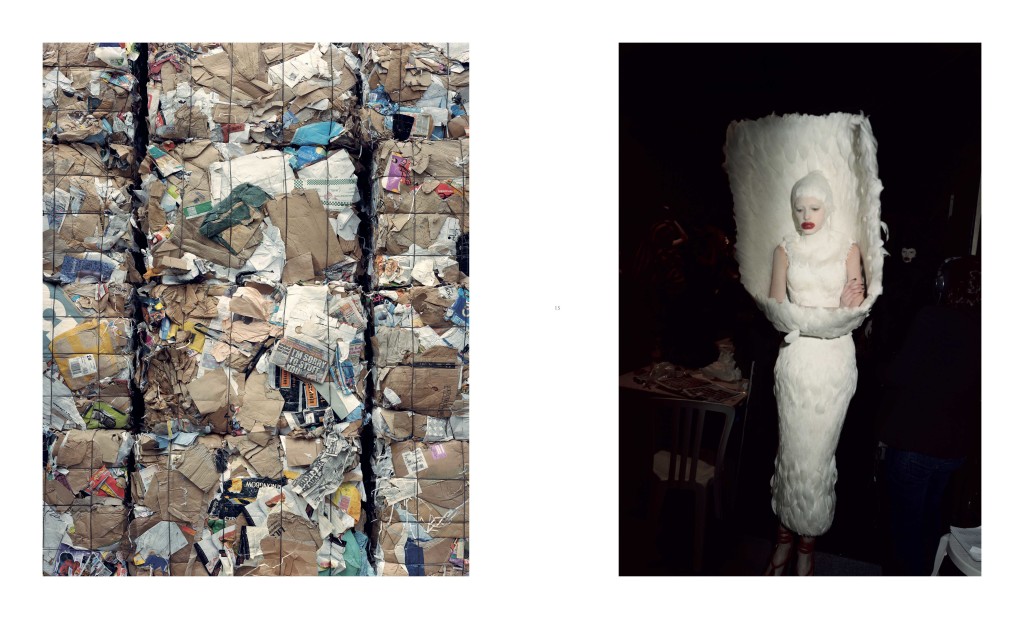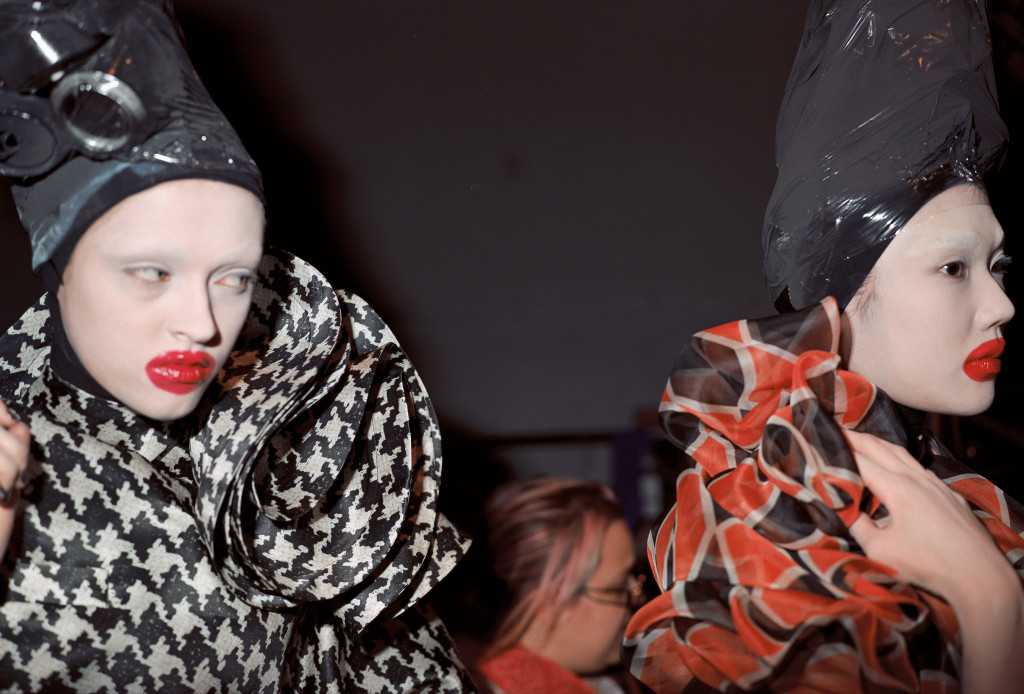If you’ve ever embarked on a work project which has consumed every waking moment, you’ll identify with Working Process. The exhibition documents the painstaking creation of the late Alexander McQueen’s final couture collection, Horn of Plenty in 2009. From the first pin and tuck to the high-drama of the Paris catwalks, the exhibition provides a fascinating insight into the working process of one of the UK’s most celebrated designers.

Untitled from the series 'Alexander McQueen Working Process' 2008-09 © Nick Waplington Working Process
Over a six month period, renown photographer, Nick Waplington was allowed unprecedented access into McQueen’s studio to document the minutiae of daily life in the fashion fish bowl. Over six hundred photos were whittled down to just over one hundred and twenty images hand-selected by McQueen for inclusion in the final photobook. Timed to coincide with Savage Beauty at the Victoria and Albert Museum, the Tate Britain retrospective features over one hundred images from the collection, some of which have never been seen before.
From initial mood board musings, models are swathed in fabric before submitting to an intricate ritual of folds, tucks and pleats to complete their metamorphosis. McQueen’s hands-on approach is pivotal to each of the photos as he fusses around his creations with the tender touch of a loving parent. Known for being a master of Houdini-style-after-show escapes, the intimacy of the photographs highlights an openness which belies his more reserved public image. Pictured padding around in his socks, the photographs give a rare glimpse of the relaxed, familial ties between the creator and the rest of his team.

Untitled from the series 'Alexander McQueen Working Process' 2008-09 © Nick Waplington Working Process
Goading us to enquire “what the hell is that?” his creations are a parody of the most influential designs of the last century including Givenchy’s little black dress and Dior’s New Look. Continually playing with our preconceptions, billowing bin bags turn out to be slips of the world’s most expensive silks.
Recycling ideas, models and sets from the past fifteen years, his final collection reflects both the fleeting nature of fashion trends and their re-emergence years later. Recycling depots, landfill sites and bulldozers are juxtaposed with flamboyant feathered costumes as a commentary on the continual cycle of destruction and creative renewal which epitomises the fashion world.

Untitled from the series 'Alexander McQueen Working Process' 2008-09 © Nick Waplington Working Process
From McQueen’s first creative stirrings, the exhibiton culminates in the catwalk grand finale, showcased in a darkened room where spotlights fixate on sneering Marie Antoinette-esque models encased in wigs and ghoulish make up.
Littered with broken mirrors and discarded trash from previous shows, the set highlights the insatiable demands of the fashion industry where whole collections are discarded as soon as they’re sold. Warned that the show could be “dangerous”, the diminutive Waplington’s closest brush with mortality was not with broken mirrors but with wobbly step ladders which he was forced to climb to snap the towering models. A far cry from his previous experiences reporting from war zones across the world.

Untitled from the series 'Alexander McQueen Working Process' 2008-09 © Nick Waplington Working Process
Leaving the show moments later, I’m struck by the boundless creativity, passion and theatricality that is required to produce such a collection. Working round the clock to produce garments that are forgotten within a matter of weeks takes passion and commitment that few of us could sustain in our 9-5 lives – a bittersweet testament when bearing in mind the tragically premature end to McQueen’s own working process.
Nick Waplington/Alexander McQueen: Working Process
10 March – 17 May 2015
Tate Britain, Level 2 Galleries
